Collecting Pieces of the
Medicine Show
by Bob Brooke
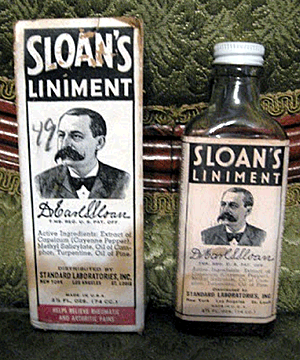 The
practice of pharmacy has undergone tremendous changes since shelves held
bottles filled with essential oils and crude drugs like arsenic,
strychnine, creosote and chloroform. So why would anyone want to collect
such things. For a small group of collectors, it’s a passion–pure and
simple. The
practice of pharmacy has undergone tremendous changes since shelves held
bottles filled with essential oils and crude drugs like arsenic,
strychnine, creosote and chloroform. So why would anyone want to collect
such things. For a small group of collectors, it’s a passion–pure and
simple.
As national drug chains build cookie-cutter look-alike stores all across
the nation, collectors and auctioneers are discovering unsold treasure
from old pharmacies—prescription stock bottles, over-the-counter
preparations, prescription records, stationery and other items dating as
far back as the late19th century—hidden in basements or behind walls.
The Appeal of Old Medicines
Pharmaceutical collectors are especially captivated by patent medicines
that predate the 1906 Pure Food and Drug Act. Medicine at the turn of
the 20th century could be deadly serious or a real hoot. The label of
Eli Lilly's Elixir No.114 revealed its ingredients included belladonna,
a poisonous plant of the nightshade family. The use of belladonna would
have had a calming influence on the patient taking the elixir.
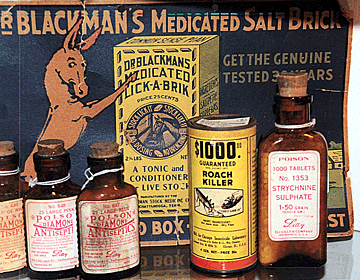 And
let’s not forget such “miracle cures” as Becks Great Indian Liniment,
guaranteed to cure headache, colic and cramps due to gas, coughs, colds
and muscular pains. Medicine showmen, traveling around the country in
elaborately painted wagons, made and distributed the majority of these
magic elixirs during the late 19th and early 20th Centuries. Alcohol
formed the base ingredient in most–Beck’s Liniment was 147 Proof–but
many also contained opium and cocaine. The ingredients combined with the
outrageous claims on the labels, led to the passing of the Pure Food and
Drug Act. And
let’s not forget such “miracle cures” as Becks Great Indian Liniment,
guaranteed to cure headache, colic and cramps due to gas, coughs, colds
and muscular pains. Medicine showmen, traveling around the country in
elaborately painted wagons, made and distributed the majority of these
magic elixirs during the late 19th and early 20th Centuries. Alcohol
formed the base ingredient in most–Beck’s Liniment was 147 Proof–but
many also contained opium and cocaine. The ingredients combined with the
outrageous claims on the labels, led to the passing of the Pure Food and
Drug Act.
What to Collect
Beginning collectors should educate themselves by looking for old
medicines at antique shows, knowing the difference between medical
antiques and pharmacy antiques, visiting pharmacy museums, reading drug
store guides, and developing good relationships with dealers.
Collectors usually collect bottles made before 1920 for their shapes and
those made after 1920 for what the bottle may have contained. For
example, there’s a market for bottles containing substances with
notoriety such as qualudes, which the government outlawed because of
their abuse. A bottle that contained them is worth $15 to $50 for the
nostalgic value alone.
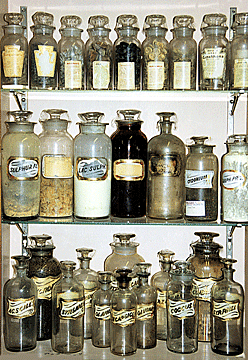 Most
highly prized are the apothecary bottles, especially those containing
cocaine, opium, Spanish Fly, Cannabis and even embossed poison bottles
with the skull and crossbones. Some people like to collect bottles from
specific drug companies, perhaps ones they worked for, especially if the
company is no longer in business like Powers & Weightman. Today, the DEA
strictly controls the sale of many of these substances. Most
highly prized are the apothecary bottles, especially those containing
cocaine, opium, Spanish Fly, Cannabis and even embossed poison bottles
with the skull and crossbones. Some people like to collect bottles from
specific drug companies, perhaps ones they worked for, especially if the
company is no longer in business like Powers & Weightman. Today, the DEA
strictly controls the sale of many of these substances.
Collectors love to collect specific medicines, such as those used by
women for cramps,. menstrual cramps, hot flashes, and sore breasts.
Medical personnel often collect items related to their specific medical
field. A respiratory therapist, for example, might collect items such as
inhalers, vaporizers, and cough remedies. But patent medicines with
interesting or graphic labels, as well as quack remedies or cures also
intrigue collectors.
Civil War Era medicines and items are particularly hot with collectors.
Dog and cat lovers like veterinary medications, especially those with a
picture of a particular breed on the label. During the 19th and early
20th centuries, veterinary medicines were an integral part of a
pharmacist’s inventory. More recently, veterinarians, themselves,
dispensed them, but that’s changing and pharmacies are once again
filling veterinarian prescriptions.
Collectors also gravitate towards the tools of the pharmacist’s trade,
including tincture presses, ointment mills, mortar and pestles
(especially with advertising on them], signs and advertising.
Commemorative items, such as signs and tools with drug company names on
them, are particular favorites.
People also collect items related to their town or particular companies,
like Whitehall Tatum, which made bottles, labels, show globes and
related glass items. But collectors should also be aware of any of the
major companies that have roots in early pharmacy but are still
operating today, such Merck and Co., Wyeth Labs, and Phizer Company.
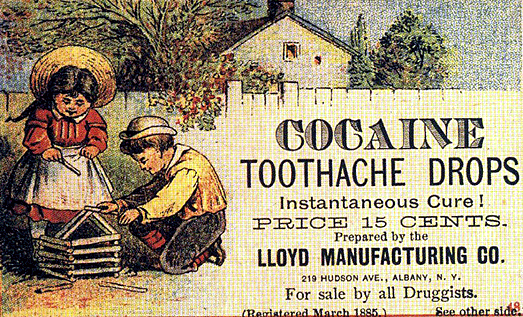
Influences to the Collectible Medicine Market
The pharmacy market has been adversely affected by eBay and 911. Before
911, there was a good market for labels on apothecary bottles. Since
911, the price has gone down because there are so many offered on eBay.
If it’s a controlled substance on the label, it’s highly collectible.
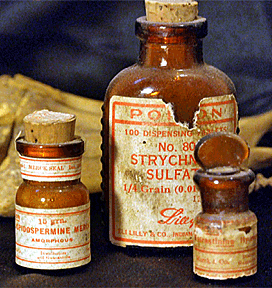 Generally
pharmacy collectibles are hard to come by. While collectors will find
the occasional item in antique shops, they’re more likely to find them
at antique shows. Generally
pharmacy collectibles are hard to come by. While collectors will find
the occasional item in antique shops, they’re more likely to find them
at antique shows.
Since there are so many different items that are possible to collect in
the pharmacy category, collectors should try to concentrate on
collecting one or two types of items early on.
Currently, about the only collectors clubs that deal with pharmacy
collectibles are bottle collectors’ groups.
To read
more of my articles, please
visit
my Web site.
< Back to Collectibles Archives
Next Article >
|
